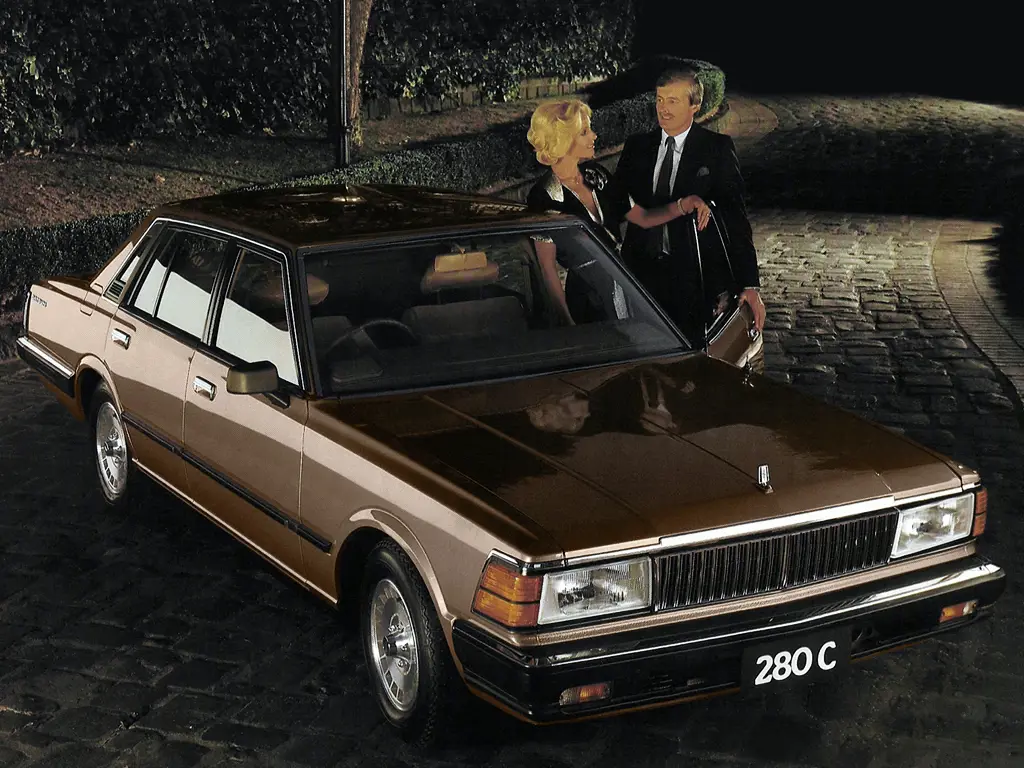THE END OF DATSUN
27 April 2022
Yesterday (25th April 2022) saw Nissan announce the end of production of Datsun cars. They had not employed their subsidiary marque on a UK-market car for 38 years, but its impact on British motoring cannot be underestimated.
It all began in June 1968 when a former NSU concessionaire named Octav Botnar imported a batch of six press cars: OKJ 213 F - a B10 Sunny 1000 saloon, OKJ 210 F – a 510 Bluebird 1300 saloon, OKJ 211 F - a 510 Bluebird 1600 Estate, OKJ 212 F – a 510 Bluebird 1600 saloon, OKJ 214 F – a 2000 Estate and OKJ 215 F – a 2000 saloon. The latter two were known as the ‘Cedric’ in their homeland, but Nissan eventually dispensed this name for English-speaking markets. Incredibly that red four-door 1000 survives and is now owned by the Japanese car enthusiast Mark Ashbridge.

It was the B10 that received much of the attention of the British press when official sales began in October of that year, Motor described it as a “Lavish Lightweight’ and for £766 0s 10d, the 1000 might have tempted a buyer who would otherwise have considered a BMC ADO16. Car magazine suggested fitting the Sunny with radial ply tyres to give it handling in the “Escort/Viva class”.
When Botnar established ‘Nissan-Datsun Concessionaires of Shoreham’, Japanese cars were not entirely unknown to British motorists. Leaving aside the Daihatsu Compagno, which never stood a chance to establish itself in this country, Toyota had started importing cars in 1965, and Honda cars starred at the 1966 Earls Court Motor Show. Those first UK-market Datsuns appealed to a small but growing number of motorists who bought a car on merit rather than national origin. In 1969, only 10% of new cars sold in the UK were made overseas, but this figure would dramatically increase over the next decade.
Botnar sold 1,200 Datsuns during his first year of operations, but by 1971 numbers exceeded 6,000 and were five times that amount in 1972. The sales director John Pinkerton told Autocar, “Datsun’s sales policy will be achieved only by appointing a well-established, professional, family business, well known with deep roots and respected in their own locality”. Some of these were former Austin or Morris outlets who had become disillusioned with the lack of support from British Leyland’s management.
As the decade progressed, Datsun would become the most popular foreign marque in Britain, outselling even Renault; they also outsold Toyota by two to one. Such was the marque’s popularity in the UK that by 1974 Sir Ray Brookes, the then President of the Society of Motor Manufacturers and Traders, approached the government for assistance to protect the domestic industry against imported cars.
In that same year, the Secretary of State for Trade stated, “in the British government’s view, the rapid build-up in Japanese car exports to the United Kingdom was unacceptable”. By 1975 negotiations with the Japanese Car Manufacturers’ Association resulted in an agreement to restrict their new car registrations to no more than 11% for the next five years. As for the reasons for Datsun’s success in the UK, Botnar offered a range of affordable and reliable cars via an extensive dealership network. The affluent driver might have placed an order for a Skyline, a 260C or even a 240Z, but the brand’s principal sales were among its family saloons.
By the end of the 1970s, a Cherry or a Sunny was as much a part of the British automotive landscape as Little Chefs dispensing Jubilee pancakes. In 1984 Nissan decided to sell their wares under the parent company’s name, but in 2012 they revived the Datsun name for certain Asian markets. So, ten years later, the name seems to have finally retired, but enthusiasts across the country will always appreciate it. Especially those who recall the memorable 1969 advertising claim “brakes with authority”.
